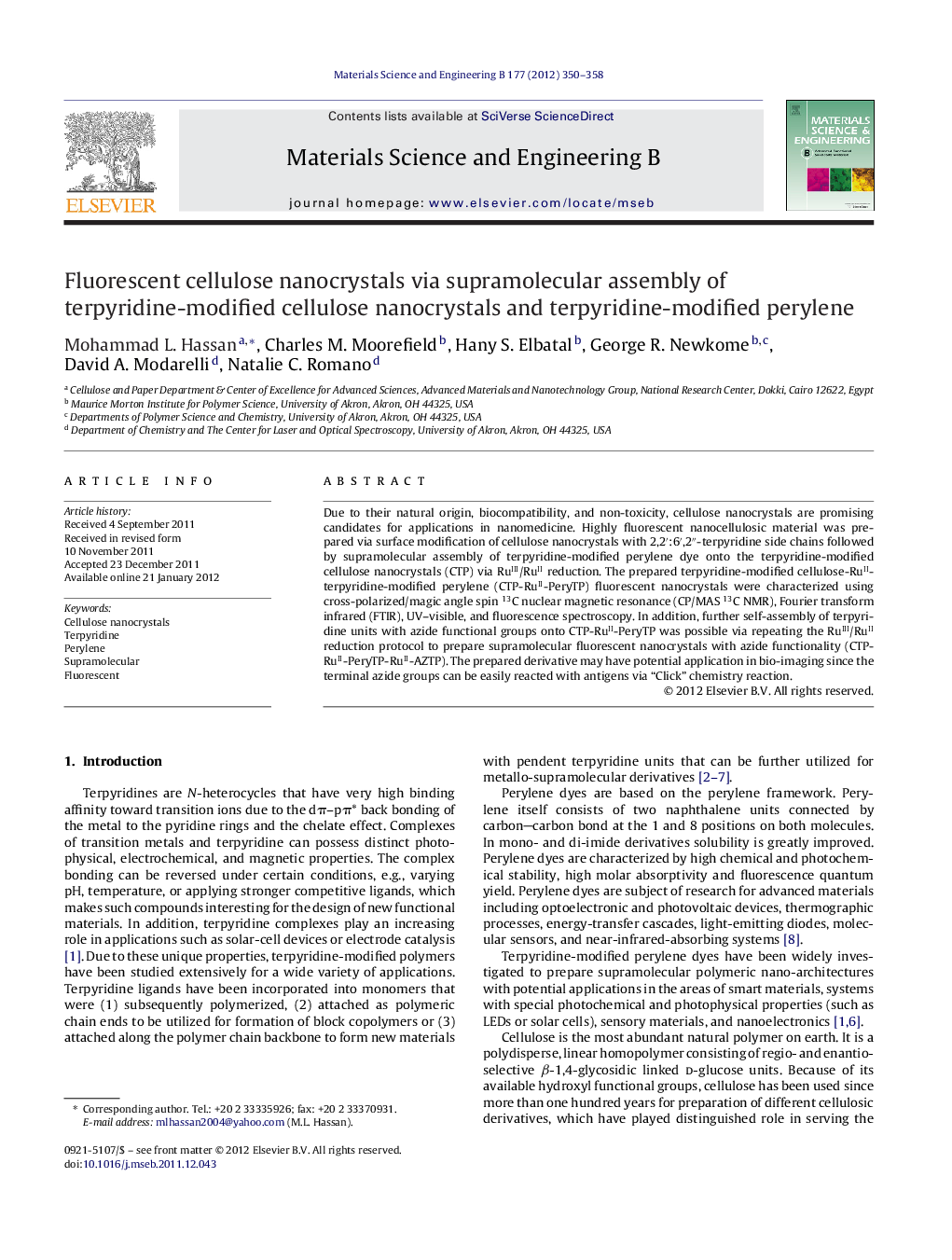| Article ID | Journal | Published Year | Pages | File Type |
|---|---|---|---|---|
| 1529565 | Materials Science and Engineering: B | 2012 | 9 Pages |
Due to their natural origin, biocompatibility, and non-toxicity, cellulose nanocrystals are promising candidates for applications in nanomedicine. Highly fluorescent nanocellulosic material was prepared via surface modification of cellulose nanocrystals with 2,2′:6′,2″-terpyridine side chains followed by supramolecular assembly of terpyridine-modified perylene dye onto the terpyridine-modified cellulose nanocrystals (CTP) via RuIII/RuII reduction. The prepared terpyridine-modified cellulose-RuII-terpyridine-modified perylene (CTP-RuII-PeryTP) fluorescent nanocrystals were characterized using cross-polarized/magic angle spin 13C nuclear magnetic resonance (CP/MAS 13C NMR), Fourier transform infrared (FTIR), UV–visible, and fluorescence spectroscopy. In addition, further self-assembly of terpyridine units with azide functional groups onto CTP-RuII-PeryTP was possible via repeating the RuIII/RuII reduction protocol to prepare supramolecular fluorescent nanocrystals with azide functionality (CTP-RuII-PeryTP-RuII-AZTP). The prepared derivative may have potential application in bio-imaging since the terminal azide groups can be easily reacted with antigens via “Click” chemistry reaction.
► Surfaces of cellulose nanocrystals were modified with terpyridine ligands. ► Fluorescent nanocrystals could be obtained via self-assembly of terpyridine-modified perylene dye onto the terpyridine-modified cellulose nanocrystals. ► Further self-assembly of azide-functionalized terpyridine onto the fluorescent cellulose nanocrystals was possible to obtain nanocellulosic material with expected use in bioimaging.
